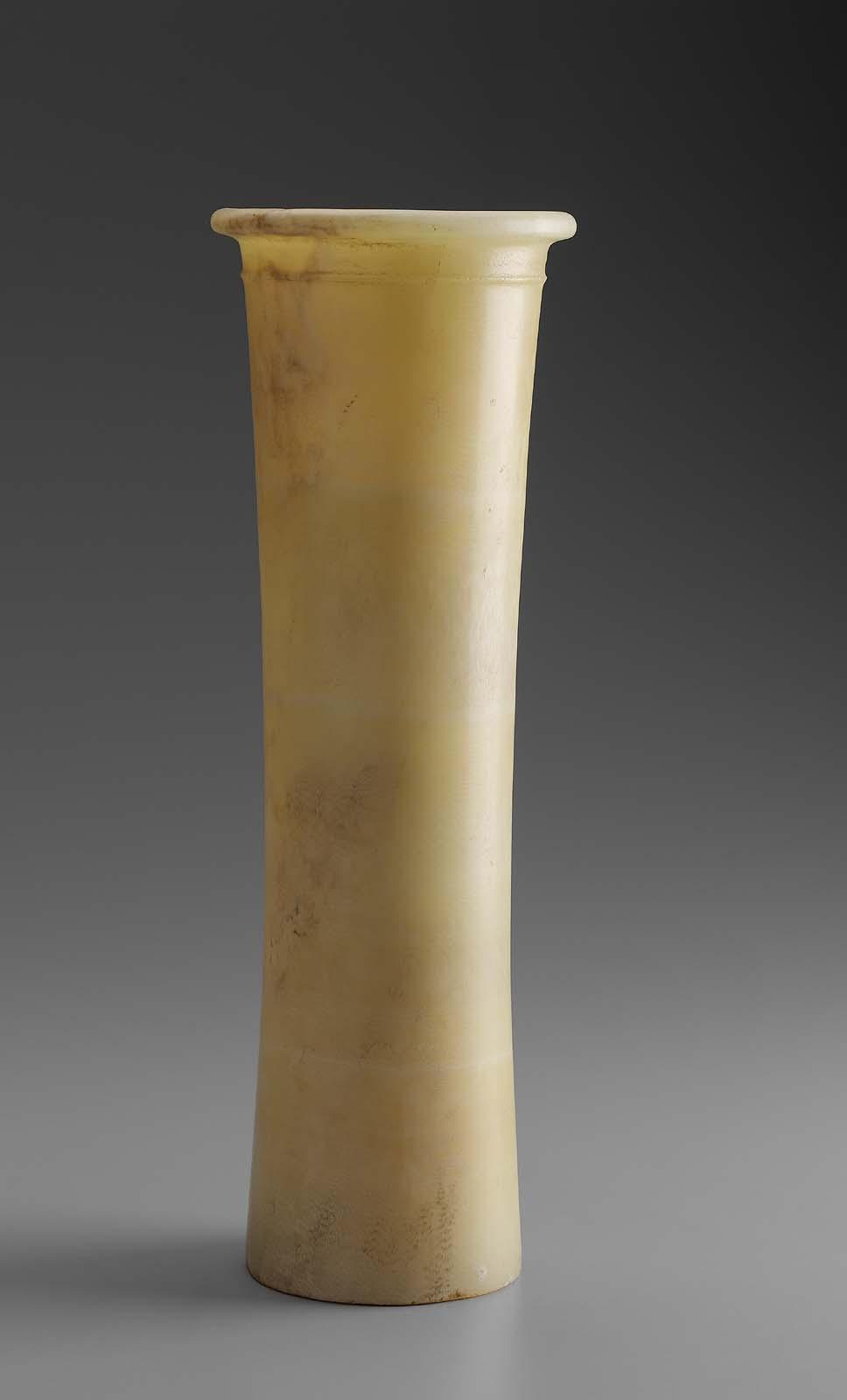Advanced Search
Cylindrical jar
Egyptian
Early Dynastic Period to Early Old Kingdom, Dyna
2750–2575 B.C.
Findspot: Egypt
Medium/Technique
Travertine (Egyptian alabaster)
Dimensions
Height: 33.2 cm (13 1/16 in.)
Credit Line
Gift of Miss Nina H. Burnham
Accession Number56.170
CollectionsAncient Egypt, Nubia and the Near East
ClassificationsVessels
This tall cylindrical jar demonstrates the skill of the Early Dynastic Period's best stone workers. The design is clean and elegant, the sole decoration consisting of a line of rope patterning, enhanced by incised hatching, just below the rim. Although the rope motif originally derived from the wavy ledge handles of Predynastic pottery jars, it had become purely ornamental by this time.
DescriptionSuperbly crafted stone vessels are among the most impressive products of Early Dynastic art. Artists chose and shaped their stone carefully to maximize the decorative effect of the natural color and banding. Travertine was the most popular choice, because it is soft and relatively easy to work, as well as beautifully translucent. Harder stones such as the rare, green volcanic tuff were prized for their color, fine grain, and smooth surface. To manufacture jars, artisans first produced a smooth, solid stone cylinder. Then they carefully drilled out the interior and polished both the interior and exterior with an abrasive such as sand. Tubular drills were made of copper or flint, and by the Early Dynastic Period craftspeople had access to a new type of drill, tipped with stone and turned by means of a crank.
This cylindrical jar demonstrates the skill of the era's best stone workers. Its original context is unknown. Its design is clean and elegant, the sole decoration consisting of a line of rope patterning, enhanced by incised hatching, just below the rim. Although the rope motif originally derived from the wavy ledge handles of Predynastic pottery jars, it had become purely ornamental by this time.
This cylindrical jar demonstrates the skill of the era's best stone workers. Its original context is unknown. Its design is clean and elegant, the sole decoration consisting of a line of rope patterning, enhanced by incised hatching, just below the rim. Although the rope motif originally derived from the wavy ledge handles of Predynastic pottery jars, it had become purely ornamental by this time.
ProvenanceBy 1956: Nina H. Burham collection; 1956: given to the MFA by Nina H. Burnham, March 8, 1956.
(Accession Date: March 8, 1956)
(Accession Date: March 8, 1956)



